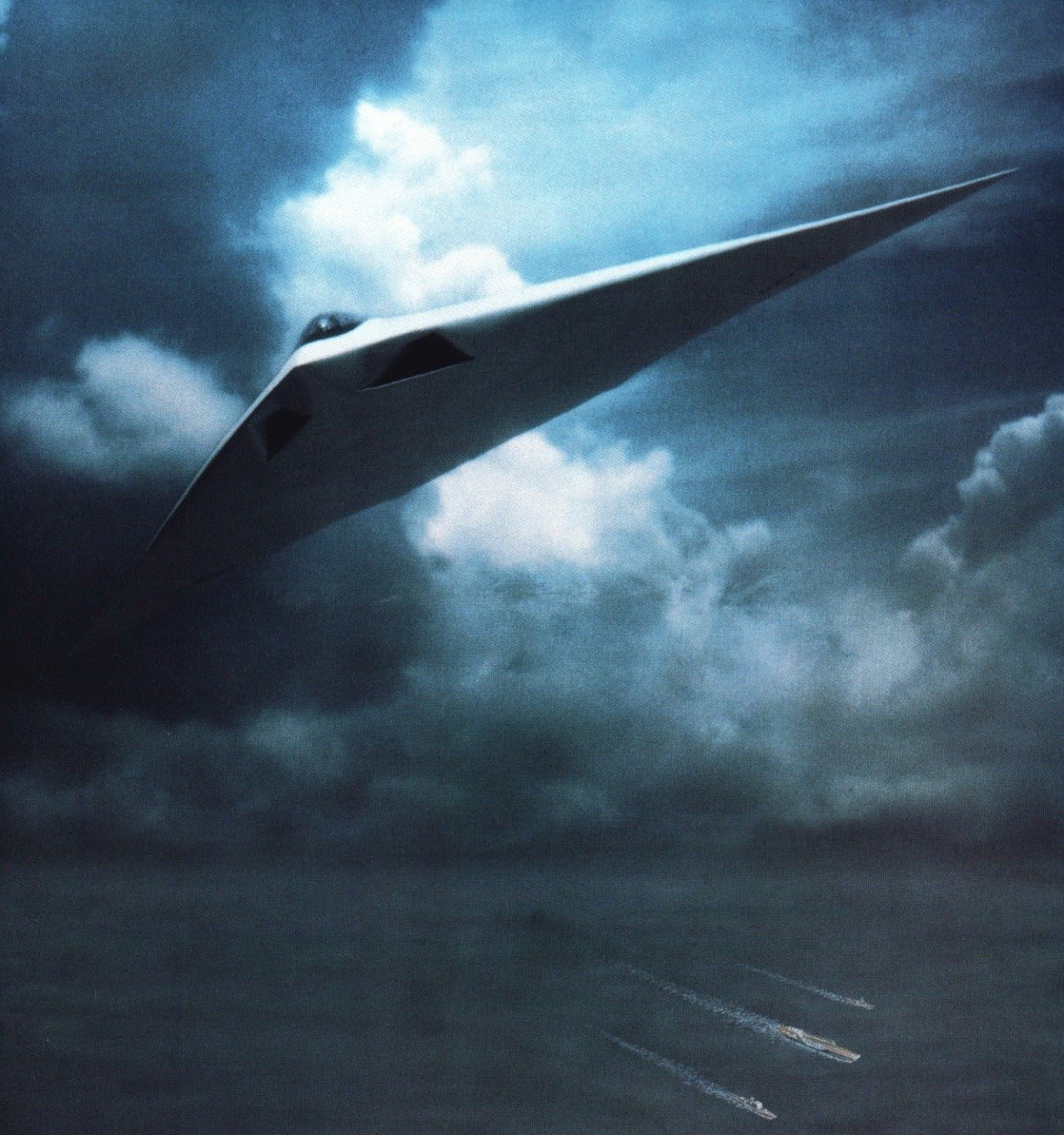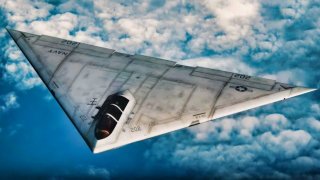The Navy's A-12 Avenger II Stealth Bomber Was a 'Disastrous Failure'
The A-12 Avenger II was a Cold War-era stealth aircraft project developed for the U.S. Navy. It faced significant challenges, including design complications, performance concerns, and massive cost overruns, especially related to its stealth features and carrier operations.
What You Need to Know: The A-12 Avenger II was a Cold War-era stealth aircraft project developed for the U.S. Navy. It faced significant challenges, including design complications, performance concerns, and massive cost overruns, especially related to its stealth features and carrier operations.

-After the end of the Cold War and budget cuts, Secretary of Defense Dick Cheney canceled the project in 1991. The cancellation led to legal disputes and is considered one of the most notorious defense program failures in U.S. history.
The Rise and Fall of the A-12 Avenger II: A $5 Billion Disaster
Conceived in the 1980s as a stealth attack aircraft that would combine the capabilities of advanced radar evasion with precision strike capabilities, the aircraft was built by McDonnell Douglas and General Dynamics, with Northrop Corporation later joining the consortium. The A-12 Avenger II is one of the most controversial projects because of the various political, financial, and technical challenges it faced.
And, after much fighting, as you’ll see, the bird was dramatically canceled.
The Navy wanted what they nicknamed a flying Dorito for carrier operations. Had they gotten it, the Navy would have possessed a significant stealth capability at sea.
The Specs
One of the primary features of the A-12 was its stealth design, aiming to minimize radar, visual, infrared, and acoustic signatures. This was a time when stealth was a relatively new concept and the military was trying to rapidly enhance the capability.
Further, it was the Cold War.
Back then, the Americans and Soviets engaged in a toe-to-toe race for military dominance as part of their global ideological struggle, between the Soviet’s communism and America’s capitalism.
More importantly, the A-12 Avenger II was to feature the most advanced avionics, navigation, bombing, and self-defense features of any bird in America’s fleet at the time.
However, the integration of stealth technology with the complex requirements of carrier operations proved far too daunting at the time. The aircraft’s design went through multiple iterations, all of which struggled to balance the need for stealth with the need for robust carrier landings.
Back then, the stress of carrier launches and landings seriously negated the sensitive stealth features of the plane.
As with many next-level military projects, costs exploded unexpectedly. The initial estimates for the bird were drowned out by the actual expenditures, which nearly broke the Navy’s allotted budget at the time. This, again, was likely born out of the fact that designers had to constantly redesign the plane to better comport with the high operational demands of carrier flight operations at sea.
Then came the end of the Cold War. Almost overnight, the massive budget outlays for defense projects dried up. Remember, the powerful Seawolf-class attack submarine, the Navy’s replacement for the Los Angeles-class attack submarine, was reduced in number from several dozen to just a few. So, the A-12 was going to be on the chopping block, too. Politicians were not going to be willing to spend on defense projects the way they had during the height of the Cold War.

Performance Woes for A-12 Avenger II
There were also performance concerns, too. Despite the secrecy surrounding the project, leaks and public reports emanated from concerned quarters that the A-12 might not be all that it was cracked up to be. It did not perform as expected, particularly in terms of its greatest feature: stealth.
Especially when compared to newer technologies that were coming online concurrent with the ailing program.
The A-12 then became embroiled in one of the most serious defense contract disputes in American history. The Navy and the contractors were at odds over performance issues, cost overruns, and delays. Lawsuits were eventually filed, leading to a horrific legal battle. Because of the rising costs and the aforementioned changing geopolitical situation, Congress had had enough. The House and Senate Armed Services Committees held public hearings that alerted the voters to the abject failures of the A-12 program.
In the same year that the Cold War ended the Soviet Union collapsed into the ash heap of history. The Secretary of Defense for the George H.W. Bush administration, Dick Cheney, finally killed the struggling program. The Navy ultimately shifted its resources toward developing the F/A-18 Super Hornet, which still rules carrier flight operations today.
A Warning
As a result of the A-12’s unceremonious cancellation, there were multiple legal repercussions. Litigation between the government and angry contractors cost the taxpayers millions of dollars in legal settlements. The A-12 never flew. But many still speculate as to what might have been.
And the A-12 had a chilling effect on how defense contracts were managed, leading to greater scrutiny and oversight for future programs.
Overall, the program was a disastrous failure. An example of a serious mismatch in what the Navy desired and what the contractors could deliver, at budget. It is a warning sign for how badly these projects can go and why oversight is key.
Author Experience and Expertise: Brandon J. Weichert
Brandon J. Weichert, a National Interest national security analyst, is a former Congressional staffer and geopolitical analyst who is a contributor at The Washington Times, the Asia Times, and The-Pipeline. He is the author of Winning Space: How America Remains a Superpower, Biohacked: China’s Race to Control Life, and The Shadow War: Iran’s Quest for Supremacy. His next book, A Disaster of Our Own Making: How the West Lost Ukraine, is due October 22 from Encounter Books. Weichert can be followed via Twitter @WeTheBrandon.
All images are Creative Commons or Shutterstock.
From the Vault
Russia Freaked Out: Why the U.S. Navy 'Unretired' the Iowa-Class Battleships
Battleship vs. Battlecruiser: Iowa-Class vs. Russia's Kirov-Class (Who Wins?)


